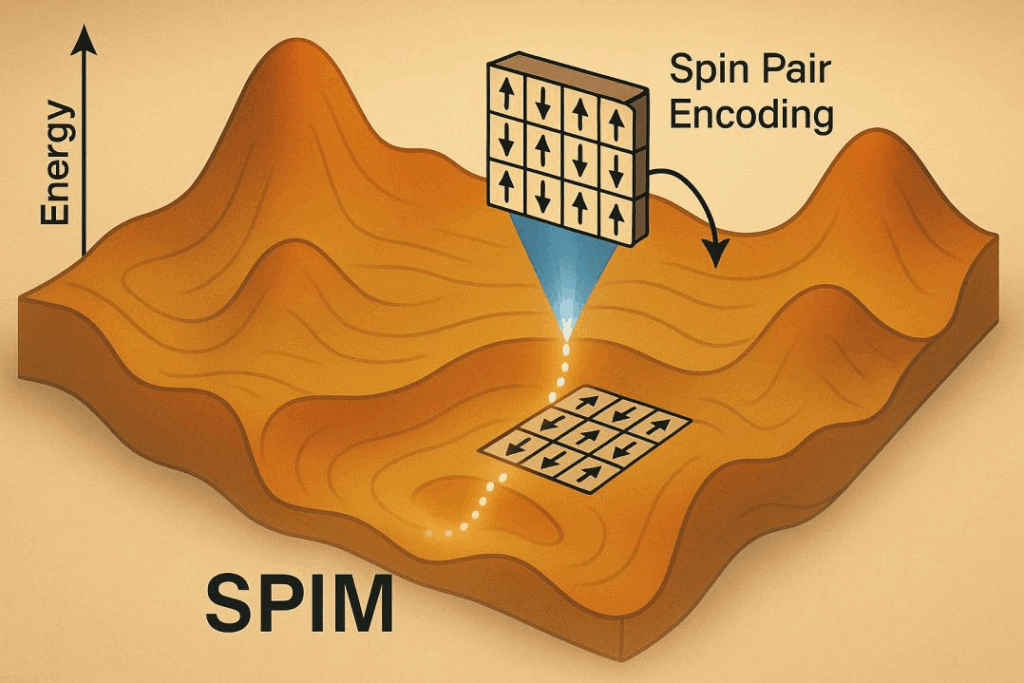Blog post 3. UBITECH, 25/04/2025
In a world increasingly driven by data and computational complexity, the need for efficient strategies to solve large-scale optimization problems is becoming ever more critical. From logistics and operations research to artificial intelligence and machine learning, many of the most demanding challenges in computing reduce to NP-hard problems, whose solution space scales exponentially with input size. Traditional digital architectures are fundamentally constrained in addressing such problems, and even quantum computing technologies remain in a developmental phase.
HoloCIM—A Virtualized Holographic Cloud Ising Machine—represents a novel approach within this landscape. Rather than relying on electrons or quantum bits, HoloCIM explores computation via the physics of diffractive light propagation, implementing an optical analog computing system: the Spatial Photonic Ising Machine (SPIM). However, the innovation extends beyond the experimental setup. HoloCIM introduces a full-stack computational platform comprising a scalable photonic processor, an advanced control software suite, and a cloud-accessible interface. Together, these components support a new paradigm: Ising-as-a-Service—a remote photonic optimization resource accessible via the web.

Central to the system is the Ising model, a framework from statistical physics originally developed to describe spin-spin interactions in magnetic materials. This model naturally maps to a broad class of combinatorial optimization problems, enabling their reformulation as energy minimization tasks over spin networks. Within the HoloCIM framework, such problems are encoded into optical spin representations. The SPIM propagates light through a modulated diffractive setup to physically emulate the dynamics of spin systems, converging toward low-energy configurations that correspond to candidate solutions.
Over the course of two years, the HoloCIM team has made significant strides in system design and implementation. On the hardware side, the SPIM has evolved from early liquid crystal-based spatial light modulators (SLMs) to a more robust architecture based on high-speed digital micromirror devices (DMDs). This transition has led to improved system speed, reconfigurability, and operational stability. To ensure accurate computation, the team has also integrated advanced optical phase correction techniques, mitigating wavefront aberrations and preserving the fidelity of the physical simulation.
Among the most impactful methodological developments is the introduction of Spin Pair Encoding (SPE). This technique enhances the representational capacity of the SPIM, enabling efficient encoding of arbitrary Ising Hamiltonians. While early SPIM architectures were restricted to all-to-all connectivity patterns, SPE allows for both sparse and dense graph topologies, significantly broadening the range of problems that can be experimentally encoded. This progress marks a step toward applying photonic hardware to realistic and structured optimization problems.
A key proof-of-concept application explored within HoloCIM is the Graph Partitioning Problem (GPP), an NP-hard problem involving the division of a graph’s nodes into equally sized subsets while minimizing the number of interconnecting edges. The GPP is relevant across numerous domains including circuit design, parallel processing, and network analysis. Using SPE, the team implemented and experimentally solved GPP instances using the SPIM platform. While current results do not surpass high-performance algorithmic solvers such as METIS, they demonstrate the SPIM’s potential for addressing non-trivial combinatorial tasks. These early experiments serve as a validation of the optical architecture’s flexibility and its promise as a future alternative to traditional digital approaches.
At the core of the HoloCIM platform lies its Machine Control Software, which serves as the system’s orchestrator. This backend layer manages the integration and coordination of optoelectronic components, enables the encoding of both general and problem-specific Ising Hamiltonians, and incorporates algorithmic routines for optimization dynamics. Designed for usability and flexibility, the software offers a user-friendly interface that allows new users to set up and execute experiments with minimal technical overhead. It ensures that the platform functions as a coherent system, capable of translating user-defined models into reliable photonic computations.
The third component of the HoloCIM architecture—cloud accessibility through Ising-as-a-Service— represents a key enabler of usability and collaboration. Through a secure, web-based portal, external users can submit problem instances, monitor experimental progress, and retrieve results interactively via Jupyter notebooks. This service-oriented model allows researchers and developers to engage with cutting-edge photonic computing resources remotely, without requiring access to specialized optical hardware.
By integrating advances in photonic hardware, control systems, and cloud infrastructure, HoloCIM establishes itself as a forward-looking platform for exploring alternatives to conventional computation. While still in a formative stage, it demonstrates the feasibility of combining analog optical processes with modern software tools to address challenging optimization tasks.
Looking ahead, the project aims to scale the platform to larger problem instances, support hybrid algorithmic-photonic approaches, and refine the user interface for broader adoption. The long-term vision is to position photonic optimization as a complementary tool within the computational ecosystem—alongside CPUs, GPUs, and emerging quantum processors.
As the limits of conventional computing become increasingly evident, HoloCIM offers a compelling alternative. By leveraging the physical properties of light to perform computation, it opens new possibilities for rethinking how we encode, simulate, and solve problems—potentially ushering in a new era of analog, physics-based computing.
This blog post is also available in pdf.


